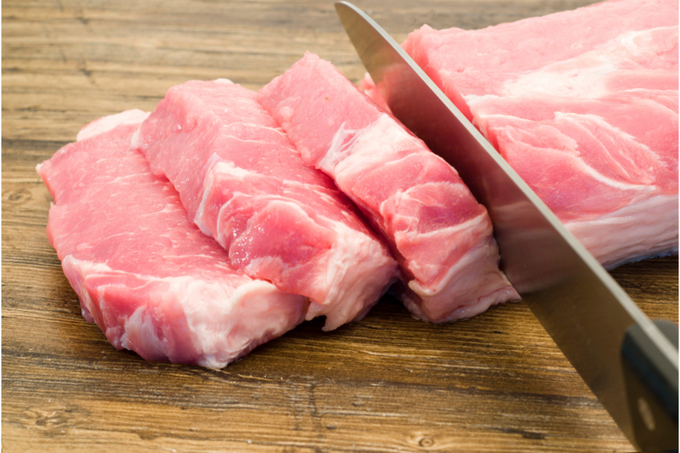May 23, 2025 | 13:04 GMT +7
May 23, 2025 | 13:04 GMT +7
Hotline: 0913.378.918
May 23, 2025 | 13:04 GMT +7
Hotline: 0913.378.918
If the upward trend continues, pork may become the country’s most popular meat.

The market expects a rise in pork consumption by 1.6 kilogrammes in 2024, which will be the strongest one-year increase in the past decade. Photo: Canva
Russian pork consumption has been steadily rising in the past decade, said Andrey Dalnov, senior analyst with state-owned agricultural bank Rosselhozbank. Since 2014, when an average Russian citizen ate 23.4 kilogrammes of pork per year, the figure surged by nearly a third. Over the past decade, the pig industry also showed outstanding growth, expanding output by 56%, Dalnov estimated.
The market expects a rise in pork consumption by 1.6 kilogrammes in 2024, which will be the strongest one-year increase in the past decade. In 2022, for comparison, pork consumption climbed by a moderate 0.8 kilogrammes to 29.6 kilogrammes and in 2023 by another 0.7 kilogrammes to 30.3 kilogrammes, as estimated by Rosselhozbank.
Dalnov is confident that the growth in pork consumption will contribute to the general improvement of the Russian population’s health. “Pork has an optimal content of amino and fatty, vitamins and microelements per calorie. The top-10 countries in the world in terms of life expectancy show relatively high pork consumption levels.”
Dalnov said that pork consumption in Russia follows an upward trajectory thanks to an increase in the population’s incomes and an expansion in supply.
Sergey Yushin, chairman of the Russian Meat Association, attributed the rise in meat consumption in Russia in recent years to a rise in incomes among the poor part of the population, in particular thanks to huge “social payments.”
Total meat consumption per capita in Russia will reach 83 kilogrammes in 2023, also the highest level ever, Dalnov forecasted.
In 2024, pork production in Russia is expected to add another 350,000 tonnes, almost reaching the output of 5 million tonnes in live weight, Rosselhozbank calculated.
Growing pork consumption threatens broiler meat’s position as the leading source of protein in Russia. In 2023, Russian broiler meat consumption per capita was estimated at 35 kilogrammes. This figure remained stable during the last few years and even occasionally slightly decreased under the pressure of pork, which has become more competitive in prices.
“I believe that in 2024, in the Russian meat basket, pork will come close to the leader – broiler,” Dalnov stated.
(PP)

(VAN) Alt Carbon has raised $12 million in a seed round as it plans to scale its carbon dioxide removal work in the South Asian nation.

(VAN) Attempts to bring down the price of the Japanese staple have had little effect amid a cost-of-living crisis.

(VAN) Fourth most important food crop in peril as Latin America and Caribbean suffer from slow-onset climate disaster.

(VAN) Shifting market dynamics and the noise around new legislation has propelled Trouw Nutrition’s research around early life nutrition in poultry. Today, it continues to be a key area of research.

(VAN) India is concerned about its food security and the livelihoods of its farmers if more US food imports are allowed.

(VAN) FAO's Director-General emphasises the need to work together to transform agrifood systems.

(VAN) Europe is facing its worst outbreak of foot-and-mouth since the start of the century.